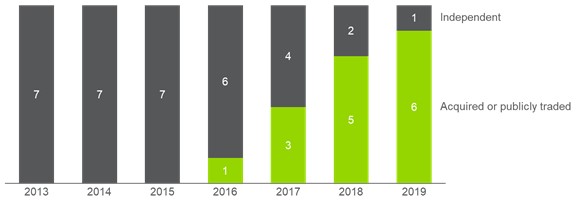- solar PV
- Finance Investing
- Climate Change
- The Energy Cloud
Investor Opportunities Following the Dutch Climate Agreement

This blog was coauthored by Maarten Staats
Guidehouse’s Financing the Energy Transformation white paper notes that investors need to understand the changing energy landscape and adjust their investment strategy and instruments accordingly. In the Netherlands, the Climate Agreement sets the scene for Dutch opportunities in the coming decade. The agreement shapes national energy and climate policies that contribute to the global climate targets specified in the 2015 Paris Agreement.
Some Dutch Sectors Face Radical Change, Driving Growth in Certain Markets
The Netherlands’ Climate Agreement is the starting point for several drastic policy measures that will radically change many sectors. For example, serious change is expected in EV charging, heat pumps, and PV solar power. PV solar capacity is expected to increase by about 15% annually until 2030. The ambition to decarbonize building stock implies that 200,000 heat pumps should be installed annually by 2030; about a 21% annual increase of heat pump installations. And the goal to have 1.8 million EV charging stations in 2030 implies a 24% annual growth in EV charging stations.
Significant Growth Expected in PV, Heat Pumps, and EV Charging

(Source: Guidehouse)
Investors Hope to Profit From Development
Investors are eager to invest in emerging markets that are stimulated by the energy transition. This is shown by recent mergers and acquisitions in the energy industry. In EV charging, heat pump, and PV markets we see some activity already:
- PV solaroffers significant investment opportunities as the market consists of many emerging players and shows good prospects for growth. Many players operate in this market with high differentiation in business models. Although the sector is increasingly consolidating with recent acquisitions (e.g., Esdec, KiesZon, GroenLeven B.V., ZON7), many target companies remain.
- Heat pumps also offer substantial opportunity, as they are considered a key alternative for the current gas boiler-based heating in the Netherlands. Most market players focus strongly on either manufacturing, wholesale, or installation. Heat pumps are often part of a wider portfolio including conventional condensing boilers. For some companies (e.g., Inventum, Atag, and Itho Daalderop), increased revenue will be offset by lower revenue in other segments by cannibalizing gas boiler revenue. Several companies have been recently acquired (e.g., Itho Daalderop, Kemkens, and eTeck).
- The EV charging market offers high growth opportunity for investors, but limited investment potential remains. The market consists of a small number of companies that are active in different parts of the value chain. Most companies have been acquired in recent years and some are now publicly traded, such as Alfen (listed on Euronext in 2018), and Fastned (which had share price triple on the day of its initial public offer in June 2019).
Market Acquisitions and Public Listings in the Dutch EV Charging Market: 2013-2019

(Source: Guidehouse)
A Change in Investment Strategy Is Needed to Find Double-Digit Returns
Although investors are interested in these fast-growing markets, the opportunities are typically smaller than in the traditional energy business. The flipside is that many larger scale investments offer lower returns. The three technologies presented here are merely examples of the many unfolding niches. More interesting opportunities are present in the broader energy ecosystem, and go beyond assets to platforms and new services businesses. These types of opportunities will emerge in the coming years and investors need to redefine investment strategies to identify them.
An understanding of the energy transition is key to capturing energy transition opportunities. Guidehouse’s Financing the Energy Transformation white paper presents three new fundamentals for financing that influence the valuation of assets and the growth potential of companies active in the energy transformation. Understanding these well will help investors to safely navigate the changing energy landscape.
This blog post builds on the analysis of Guidehouse intern Cees de Wit